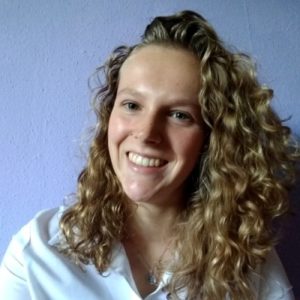About me
Growing up in the countryside of the Netherlands, with many livestock farmers among my family, and parents having a pet shop, I decided to study a BSc in animal sciences in 2015. After three years at Wageningen University & Research (WUR), I decided to pursue, and stayed there for my first year of Masters. However, I’ve always been interested in traveling, learning and exploring the world. Hence, the second year of the European Master in Animal Breeding and Genetics (EMABG), was completed at the University of Natural Resources and Life Sciences (BOKU) in Vienna, Austria. A previous travel experience to Africa made me very much aware of the inequality in the world, and raised my interest regarding international development studies. BOKU is very much focused on this topic, and helped me a lot with obtaining more knowledge about it. After graduating in September 2020, I got a temporary job at WUR as EMABG coordinator and research assistant. It was a pleasure to work at my old home uni, although it didn’t last long. By October 2021 I started off with a PhD in plant genetics at the University of York. Breeding Amarant for smallholder farmers in South-Africa, is a great opportunity to achieve my personal goal; contributing to agriculture and food security, in Africa and elsewhere in the world.
My research
Amaranth, a widely consumed leafy vegetable in sub-Saharan Africa, is underutilized in research and breeding. Amarant is typically harvested from the wild, has high nutrient content, can be grown on poor soil with low inputs and are C4 plants with enhanced resilience to water deficit. Amaranth cultivation by smallholder farmers (rather than wild harvesting) would provide greater control over availability and enhance consumption for nutritional benefits. In addition, amaranth can deliver household income, because of its high value, and help build climate-resilience into smallholder agriculture. Scaling-up cultivation of amaranth, however, requires improved varieties and breeding. A multi-parent advanced generation inter-cross (MAGIC) population of leafy amaranth was created by the World Vegetable Centre (WVC). The population captures the diversity of 8 parent lines, of which 4 are A. hypochondriacus and 4 are A. cruentus amaranth species. This population will be grown by the Agricultural Research Council (ARC) in South-Africa for phenotypic data collection in multiple field trials and environments. We will genotype the population and I will integrate the data to link traits to genetic regions. I am also working with genomic, metabolic and phenotypic data from a diversity set of 90 different amaranth lines, to identify the impact of genotype and environment and characterise these lines for important traits. What I hope to achieve is acquiring more bioinformatics and data analysis skills, improving competences as a scientist, learning and growing more as a person, but most importantly; contribute to sustainable food production in neglected areas and make a difference for the people living there.
Contact
LinkedIn: https://www.linkedin.com/in/maud-de-kinderen/
Twitter: none

